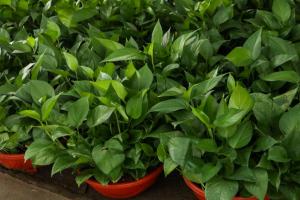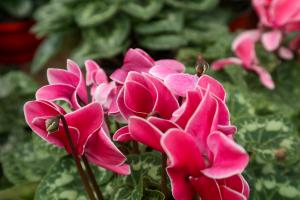How to Plant in Deep Pots
When it comes to planting in deep pots, it's important to pay attention to a few key factors to ensure your plants thrive. Here are some tips for planting in deep pots that will help set you up for success.
Choose the Right Potting Mix
Deep pots require a potting mix that is designed to promote good drainage, as well as hold onto water for a prolonged period. This is especially important for plants that require a lot of moisture, such as herbs and flowers.
When choosing a potting mix, look for one that contains ingredients like perlite or vermiculite, which provide aeration and drainage. Additionally, mix in some compost or well-rotted manure to provide your plants with additional nutrients.
Provide Adequate Drainage
Good drainage is critical when planting in deep pots – without it, your plants are more susceptible to root rot and other issues. Ensure that your pot has drainage holes at the bottom, and fill the bottom of the pot with some rocks or gravel to aid in drainage.
If you're planting in a pot without drainage holes, consider adding a layer of activated charcoal to the bottom of the pot to help absorb excess moisture.
Choose the Right Plants
When planting in deep pots, it's important to choose plants that have deep roots, and that don't mind being confined to a smaller space. Some great options for deep pots include tomatoes, bell peppers, eggplants, and root vegetables like carrots and beets.
If you're growing herbs or flowers, look for varieties that will thrive in a container environment, such as lavender or rosemary.
Water Your Plants Regularly
Deep pots can help to retain moisture, but they can also dry out quickly. Be sure to water your plants regularly, taking care not to overwater them, as this can lead to root rot. A general rule of thumb is to water when the top inch of soil feels dry to the touch.
Additionally, be mindful of the environment your plants are in – hot, dry weather will require more frequent watering, while cooler temperatures and higher humidity may require less.
Consider Using Fertilizers
Plants in deep pots may not have access to as many nutrients as those planted in the ground, so consider using a fertilizer to help promote healthy growth. Look for a slow-release fertilizer that will continue to provide nutrients over a longer period of time.
Alternatively, you can also use a liquid fertilizer every few weeks to supplement your plants' nutrient intake.
Conclusion
Planting in deep pots can be a great way to grow a variety of plants in smaller spaces. By choosing the right potting mix, providing adequate drainage, choosing the right plants, and watering regularly, you can help your plants thrive in their new home.
Don't forget about using fertilizers to provide additional nutrients, and always be mindful of the environment your plants are in to keep them healthy and happy.

 how many times do yo...
how many times do yo... how many planted tre...
how many planted tre... how many pine trees ...
how many pine trees ... how many pecan trees...
how many pecan trees... how many plants comp...
how many plants comp... how many plants can ...
how many plants can ... how many plants and ...
how many plants and ... how many pepper plan...
how many pepper plan...






























